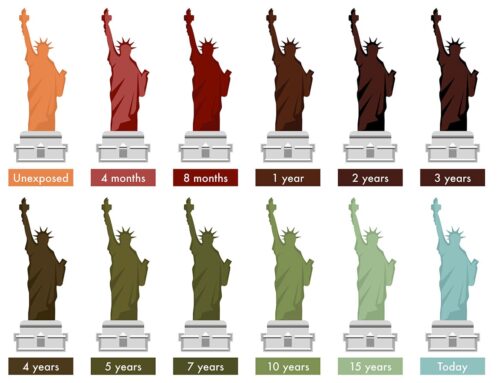This first part of the article on supply chain responsibility in IPC documents deals with IPC-A-610 and IPC/WHMA-A-620.
If your company is ISO certified, you will probably have heard of supply chain responsibility before, also called chain control or supply chain management. What exactly does it mean? From the ISO 14.001 perspective chain control can mean that the chain – from raw materials to production, use and disposal – is managed in such a way that as few as possible materials are wasted and emissions are minimized. In CSR (Corporate Social Responsibility) discussions, too, the concept often pops up, e.g. when weighing social and environmental concerns in the choice of sub-contractors.
It boils down to the producer being responsible for the various aspects in the whole supply chain. IPC too devotes a number of documents to the notion of supply chain responsibility / management, while not always using this term. One of the most frequently used IPC documents is IPC-A-610, which holds the acceptance requirements for electronic assemblies, so parts of electronic products ranging from coffeemakers to satellite systems. This document is referred to in many contracts when electronic assemblies are ordered. As to supply chain responsibility the document states as follows:
1.9 Requirements flowdown
When this Standard is contractually required, the applicable requirements of this standard (including product class – see 1.3) shall be imposed on all applicable subcontracts, assembly drawing(s), documentation and purchase orders. Unless otherwise specified the requirements of this Standard are not imposed on the procurement of commercial-off-the-shelf (COTS or catalog) assemblies or sub-assemblies.
When a part is adequately defined by a specification, then the requirements of this Standard should be imposed on the Manufacturer of that part only when necessary to meet end-item requirements. When it is unclear where flowdown should stop, it is the responsibility of the Manufacturer to establish that determination with the User.
When an assembly, e.g. daughterboard, is procured, that assembly should meet the requirements of this Standard. The connections from the procured assembly to the manufactured assembly shall meet the requirements of this Standard. If the assembly is manufactured by the same manufacturer, the solder requirements are as stated in the contract for the entire assembly.
The design and workmanship of COTS items should be evaluated and modified as required to ensure the end-item meets contract performance requirements. Modifications shall meet the applicable requirements of this Standard.
Often wiring harnesses are applied in electronic devices. In this case the IPC document referred to in contracts is IPC/WHMA-A-620:
1.9 Requirements flowdown
When this standard is contractually required, the applicable requirements of this standard (including product Class – see 1.3) shall [D1D2D3] be imposed on all the relevant subcontracts, assembly drawing(s), documentation and purchase orders. Unless otherwise specified, the requirements of this standard are not imposed on the procurement of commercial-off-the-shelf (COTS) assemblies or sub-assemblies.
When a part is adequately defined by a specification, then the requirements of this standard should be imposed on the manufacture of that part only when necessary to meet end-item requirements. When it is unclear where flowdown should stop, it is the responsibility of the Manufacturer to establish that determination with the User. When an assembly is procured, that assembly should meet the requirements of this standard. If the assembly is manufactured by the same Manufacturer, the requirements are as stated in the contract for the entire assembly.
This therefore means that a manufacturer of electronic assemblies or wire harnesses cannot hide behind a statement like ‘we have not done this ourselves but we have contracted it out to another company, so we cannot be blamed’. It is not a matter of blaming a party but allocating responsibility. This responsibility is laid down in the signed contract. In case of catalogue ware (COTS) responsibility is different, because COTS is beyond the supplier’s span of control. An example is a touch screen monitor that is built into a control cabinet as an operating panel. Such monitors are readily available on the market as an end product with different features and quality specifications. When procuring such a product the manufacturer does not need to check whether the producer of the monitor has met the IPC standards. If, however, the manufacturer cuts a connector during the installation in order to solder his own wires straight onto the assembly, then the IPC standards do apply to this ‘operation’.
Understanding the possible impact of the texts in the above-mentioned standards on the end product is essential to prevent problems in practice. It is also important that it is clear what the role is of the party giving the order (called ‘user’ by IPC) and of the party accepting the order (called ‘producer’ by IPC). Obviously, in case of doubt mutual consultation in advance is preferred over conflicts and claims afterwards, as these may damage reputations.
Note: COTS is the abbreviation of ‘Commercial Off The Shelf’, so products that are generally available to the public as an end product. A computer that is purchased and subsequently incorporated into an end product would be an example.






